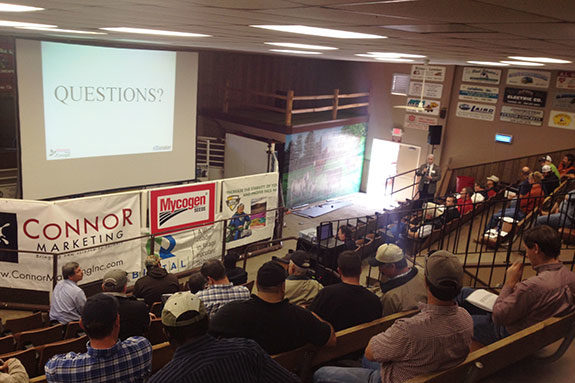A farmstead engineering extension specialist at the University of Wisconsin-Madison, Holmes was the keynote speaker at the one-day event, designed to help producers maximize their forage investments.
Holmes offered these guidelines on proper silage harvest and storage practices:
-
•Harvest at the appropriate maturity and moisture content. Whole plant corn should be harvested at 65 percent to 68 percent moisture and hay silage at 60 percent to 65 percent.
- Reduce respiration losses by quickly storing silage after harvest and ensuring the equipment being used matches the job. This might require multiple filling and packing tractors for bunkers and piles.
- Limit silage porosity by densely packing silage. Use heavy packing tractors and make multiple passes so that silage is efficiently packed.
- Properly cover silage after filling by sealing edges, adding extra weight at the joints and sealing holes in plastic covers.
- Decrease feedout losses by disposing of spoiled feed and leaving a smooth feedout face.
Mycogen Seeds and other industry partners hosted the Silage Pit School. To learn more, check out these harvest and storage tips, visit the University of Wisconsin-Extension Forage Resources Web page or visit your local university extension website. FG
PHOTO
Brian Holmes discusses how to reduce silage losses during harvest and storage at a recent Silage Pit School in Turlock, California. He spoke to dairy producers, herdsmen, custom harvesters and dairy nutritionists. Photo courtesy of Mycogen Seeds.











